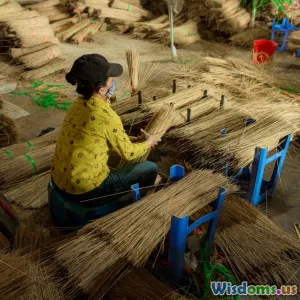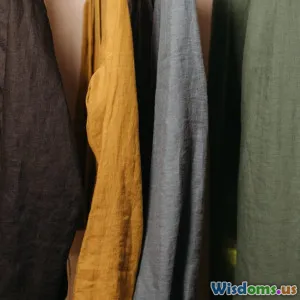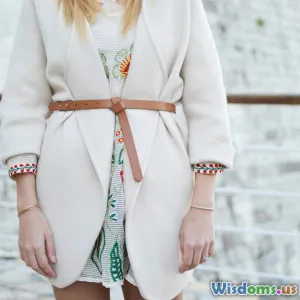
Why Small Local Designers Are Leading Sustainable Fashion Movements
6 min read Explore how small local designers drive sustainable fashion through creativity, ethics, and community-focused innovation. (0 Reviews)
Why Small Local Designers Are Leading Sustainable Fashion Movements
Fashion is often scrutinized for its colossal environmental footprint, from pollution to waste. Yet amid the vast landscape of brands, small local designers are emerging as unexpected heroes in the sustainable fashion arena. They’re not following mainstream trends — they’re rewriting the rules.
This article explores why these designers are spearheading sustainability with authenticity, agility, and community connection, and what lessons the fashion industry can learn from their approach.
The Unique Advantages of Small Local Designers
Unlike large corporations, small local designers often operate with fewer layers of bureaucracy and tighter community bonds. This enables faster innovation and a deeply rooted awareness of their environmental and social impact.
Direct Relationship with Communities and Materials
Local designers frequently source materials within their region, reducing transportation emissions and boosting local economies. For example, Stella McCartney, though a large brand descendant, has emphasized working with local artisans and suppliers during collections featuring localized production. Quite literally, these designers nurture a circular ecosystem where clothing production benefits their neighbors.
Agility and Experimentation
Small scale allows for rapid experimentation with sustainable fabric technologies or production methods. Take for instance, the Brooklyn-based brand Mata Traders, which combines handwoven textiles sourced directly from Indian artisans with fair trade principles. Larger brands rarely pivot so quickly or risk as much creatively.
Ethical Labor Practices as a Foundation
Sustainability extends beyond materials to human rights and ethical labor. Local designers often collaborate closely with workers, ensuring fair wages and safe working conditions.
Example: Chicago’s designer Niat partners with refugee artisans, preserving traditional craftsmanship while providing sustainable employment. This labor transparency contrasts with fast fashion’s frequent exploitation critiques.
Craftsmanship and Longevity over Mass Production
Small designers encourage consumers to value quality over quantity. Handmade details, durable textiles, and timeless styles result in garments that last years rather than seasons.
A 2019 report from the Ellen MacArthur Foundation highlighted that extending clothing lifetime by just 3 months reduces carbon, water, and waste footprints by around 5-10%. Small brands intrinsically embed this principle.
Storytelling and Consumer Education
Engaging consumers through stories strengthens sustainable mindsets. Small designers use storytelling to communicate the origin, impact, and care instructions for each piece — fostering mindful consumption.
For instance, Maison de Mode, a small label in Copenhagen, provides QR codes on tags linking to videos about the makers behind each garment. This transparency empowers consumers to appreciate every textile’s journey.
Challenges Faced and Overcome
While leading sustainability, small designers face hurdles including:
Limited Resources and Scale
Eco-friendly materials and fair wages often come at higher costs that restrict growth. Yet brands like Ólafur Ólafsson in Iceland use crowdfunding to support expanding sustainable collections.
Competition with Fast Fashion
Consumers attracted to affordability and fast trends pose competition. Small designers counter this with value-based storytelling and exclusive designs.
The Ripple Effect on Industry Norms
Through regional fashion weeks and collaborations, small local designers push larger companies to rethink supply chains and sustainability claims. Initiatives like the Global Fashion Pact echo principles championed first by grassroots creators.
How Consumers Can Support Sustainable Local Designers
- Seek transparency: Prioritize brands openly sharing sourcing and labor information.
- Value quality over quantity: Invest in pieces designed to last.
- Engage with communities: Attend local markets or events to build direct connections.
Conclusion: Small Local Designers as Catalysts for Change
Small local designers exemplify how combining heritage, creativity, ethical labor, and sustainability can reinvent fashion’s future. Their proximity to communities and nimble practices enable holistic approaches often impossible for global giants.
Supporting them isn’t just about eco-friendly apparel; it’s a vote for a conscientious economy that honors people and planet alike. As consumers gain awareness, these artisans will continue to lead by example — quietly transforming fashion from the ground up.
References
- Ellen MacArthur Foundation, “A new textiles economy: Redesigning fashion's future,” 2019.
- Company websites of Mata Traders, Niat, and Maison de Mode.
- Global Fashion Pact, Industry commitments to sustainability.
By embracing and championing small local designers, we pave the way toward a more equitable and environmentally sound fashion industry.
Rate the Post
User Reviews
Popular Posts




















